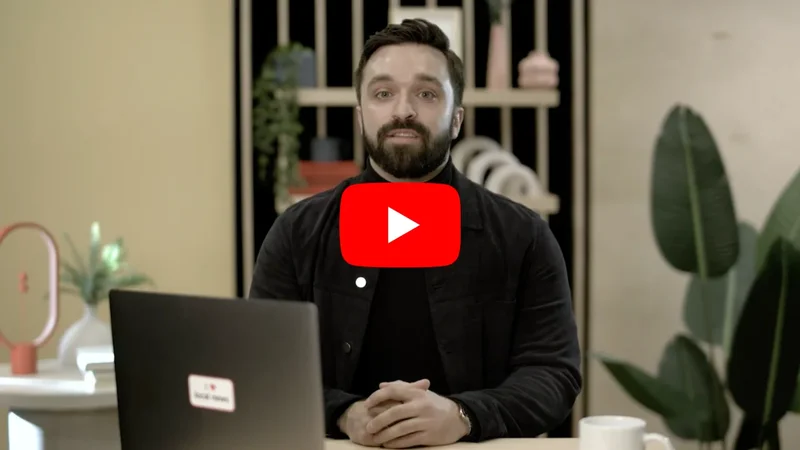Estimate Ad Revenue
Understand what impacts ad revenue
Estimate how much ad revenue you could earn

If you already sell or are considering selling ads, the calculator helps you:
- Get a sense of whether ads are worth your investment, based on your traffic
- Identify what impacts your ad revenue
- Identify which areas to focus on to grow ad revenue
This value is only an estimate - use directionally, rather than exactly.
What affects ad revenue?
Ad revenue depends on the price at which you sell your ads, and the volume that you sell:
- Price is measured by cost per thousand impressions, or CPMs, or a flat rate as listed on your rate card
- Volume is measured by viewable impressions and sell-through rate, whether you sell directly or programmatically. Viewable impressions depend ad units, page views, and viewability.
Your total ad revenue a sum of direct sold revenue and programmatic sold revenue.
We’ll cover each metric, how they’re calculated, and best practices to improve them.

How is ad revenue calculated?

STEP ONE
Calculate viewable impressions:
Viewable Impressions = Ad units × pageviews × Viewability
STEP TWO
Divide by 1,000:
Viewable Impressions / 1,000
STEP THREE
Multiply by cost per thousand impressions (CPM) and sell-through rate (STR):
(Viewable Impressions / 1000) × Cost per thousand impressions × Sell-through rate
💡 Best practice: If you don’t have any of these metrics, use industry averages. We’ve already included them for you!

1. Ad units

Ad units are where you show ads on your website or in your app.
Ad units per page affects other metrics. Adding ad units affects your site’s user experience; the better the user experience, the higher your ad viewability.
The specific number of ad units per page and ad unit prices can vary based on types, sizes, and placements. Use the average ad units per page directionally.
💡 Best practices:
- If you don’t know your ad units per page, go to your homepage and count the number of ads you see.
- Offer premium ad units, such as well-placed ads or more interactive ad formats
- Place more articles or content than ads on a page.

2. Pageviews

Pageviews are the total number of times your pages are loaded. If someone clicks reload after reaching the page, or returns to a page, it’s counted as a second page view. Given that ads are placed on your pages, pageviews are strongly correlated with ad views.
If you don’t know your total monthly pageviews, multiply your monthly active users (MAUs) by pageviews per visit and monthly visits per user.
Does low traffic mean low ad revenue?
Not necessarily. It depends on how you sell your ads: for example, while you might not earn a lot of revenue from programmatic, direct advertisers might be more willing to offer higher CPMs to reach more specific audiences.
💡Best practice: Learn more about how to increase traffic with our Audience Lessons.

3. Viewability

Viewability measures when at least 50% of an ad is visible for at least one second (display) or two seconds (video).
Many advertisers exclude less viewable ads from overall ad buys, and require ad campaigns to meet viewability thresholds, such as 70% viewability, recommended by the Interactive Advertising Bureau (IAB).
Viewability impacts other metrics:
- For every 1% increase in viewability, publishers tend to see a 2% increase in CPMs
- At 70-80% viewability, CPMs are 4x higher than at 10% viewability.
- Size, type, and location of your ad unit will impact viewability
💡 Best practices to increase viewability:
- Place ads so they’re visible without having to scroll, also known as above-the-fold.
- Place ads near the bottom of the screen, also known as the viewport.
- Place ads just below the navigation bar, instead of at the very top of the page.

Your impressions are impressive!

Now you have your total viewable impressions, which is your available ad inventory.
What affects ad inventory value?
Ads are sold by the thousands. Advertisers pay a rate called cost per thousand (CPM) for every 1,000 impressions.
Most publishers don’t sell all of their impressions. Sell-through rate (STR) measures how many viewable impressions you sell, divided by viewable impressions.
💡 Best practice: Avoid placing ads next to sensitive breaking news, extreme weather, or other content advertisers may not want their ads to appear next to.

4. Choose how to sell your ads

Next, select how many ads you’ll sell via direct or programmatic, and how many ads you’ll set aside for house ads.
How do I decide direct versus programmatic?
On average, news organizations sell 75% of ads directly, and 25% programmatically.
Reduce your direct allocation if you’re not selling 100% of the ads. Direct ads generally sell for higher prices ($10-20 CPMs), but don’t sell out (60-80% sell-through).
Reducing direct ads, though higher-priced, reduces unsold inventory by allowing those ads to be sold programmatically.
What about house ads?
House ads are ads on your news site or app to promote your news organization or its products. House ads use your ad inventory for free.
It may seem contradictory to use your own ad inventory, but house ads can show when another ad isn’t sold. House ads can help you earn other types of revenue. If you have a subscription, a house ad can be used to promote it to your readers, thereby earning you revenue from a subscriber rather than an advertiser.

5. Direct CPMs and STRs

Direct is when you sell to clients without a third party involved. Direct ads typically earn 2-3 times more revenue than programmatic ads.
Direct CPMs range from $10-$20, and sell-through rates range from 60-80%.
How are direct ads sold?
- CPM is the price an advertiser pays for every 1,000 impressions
- Sponsorship is when you sell ad formats, sizes, or placements exclusively to one advertiser, like a homepage takeover. These are generally sold at a single price, such as $5,000 for a monthly takeover.
- Share-of-voice is when you sell ads to several advertisers, and each gets a percentage of the impressions. For example, for a homepage takeover with two advertisers, each advertiser could get 50% of the impressions.

6. Programmatic CPMs and STRs

Programmatic is when you sell ads through an automated platform, like Google Ad Manager.
Programmatic CPMs range from $1 to $5. Sell-through rates range from 90-100%.
How are programmatic ads sold?
Programmatic selling varies based on who you’re selling to, and what price they pay:
- Open auction: you offer your ads to all advertisers, who bid in real-time.
- Private auction: you offer your ads to a group of advertisers, who bid in real-time
- Preferred deals: you offer one advertiser the first chance to buy your ads at an agreed-upon price
- Guaranteed deals: you offer your ads to one advertiser at an agreed-upon price
How do rates vary across programmatic?
- Open auctions have the highest sell-through rates, but lower CPMs
- Private auctions have higher CPMs, but lower sell-through rates, because there are fewer advertisers
- Preferred and guaranteed deals can get the highest CPMs, but lower sell-through rates









